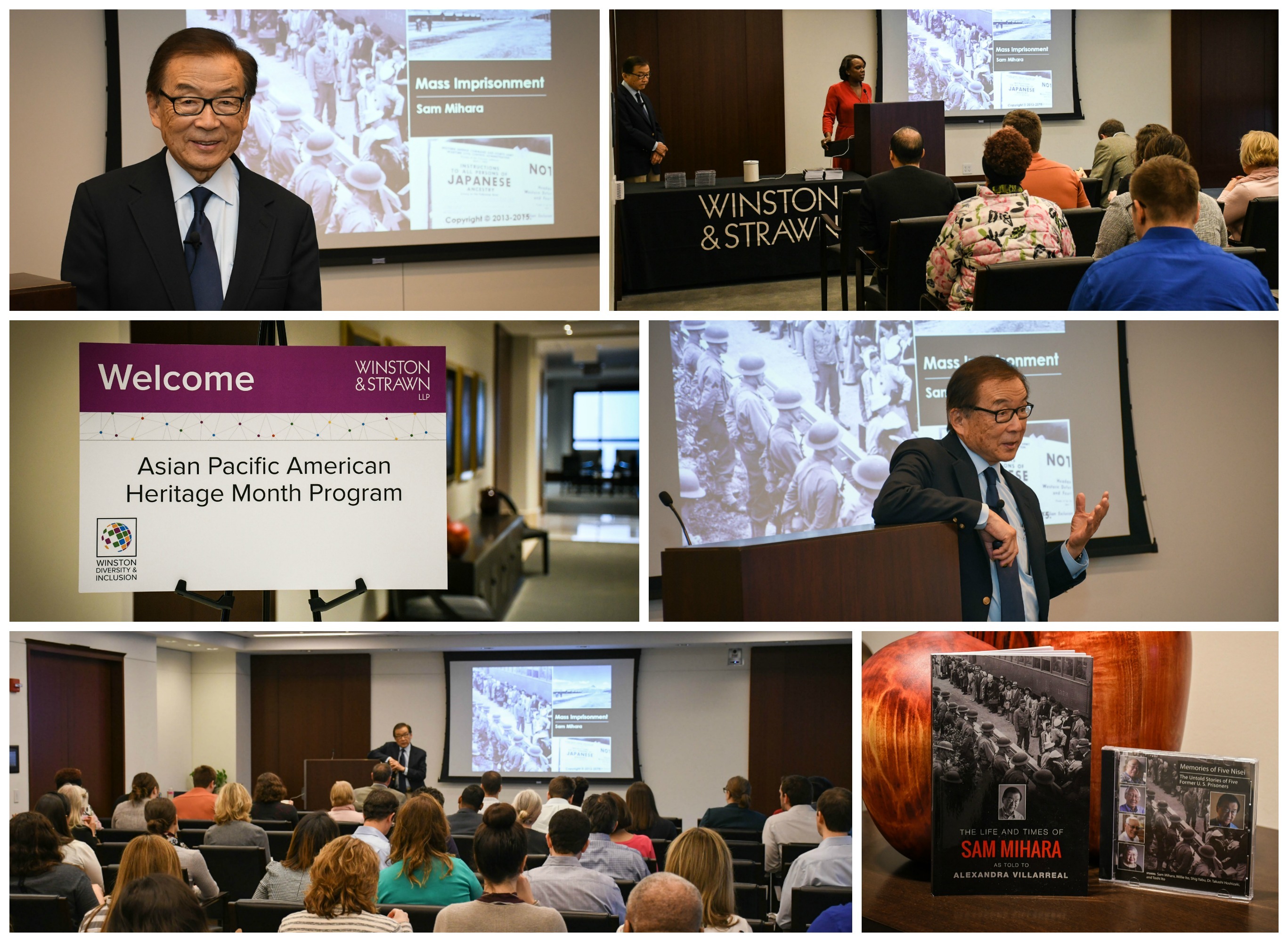Blog
Firmwide Program Honors Asian Pacific American Heritage
Blog
May 24, 2018
Winston’s Diversity & Inclusion Committee and the Asian Leadership Initiative affinity group welcomed Japanese internment camp survivor Sam Mihara on May 21 to the firm’s Asian Pacific American Heritage Month program. Mihara’s personal account of Japanese-American imprisonment during World War II enlightened firm members, clients, and alumni through stories of courageous heroes and lessons learned.

Mihara is a Nisei—or second-generation—Japanese American, born in this country to parents who came here to give their offspring a better life. Like many Asian people who settled on the West Coast after helping to build the nation’s railroad, Mihara and his family found themselves in San Francisco during a time of growing anti-Asian sentiment that erupted into hysteria after Japan’s attack on Pearl Harbor in December 1941.
The U.S. government’s removal of Japanese Americans to internment camps, Mihara explained, was authorized by an Executive Order signed by President Roosevelt in 1942. Military commanders in most of the country chose not to execute the order due to industry’s need for workers, but the Western Defense Command issued Instructions to All Persons of Japanese Ancestry. After a mass registration of Japanese Americans in California, Oregon, and Washington, Mihara, his family, and 120,000 others were numbered, tagged, searched by armed guards, put on trains, and taken to prison camps.
Photographer Dorothea Lange was commissioned by the government to take “nice” pictures of Japanese people, but “she does not take instructions” Mihara said. Photos Lange took during the removal process were hidden for many years, but ultimately helped bring about the formal 1988 apology to Japanese-Americans. Lange’s photo of Asian and white school children saying the Pledge of Allegiance came to symbolize the true intent of “liberty and justice for all.” And Mihara would later marry the little Asian girl pictured front and center.
At age nine, Mihara entered the Heart Mountain Relocation Center near Cody, Wyoming, where he, his family, and thousands of others lived for three years in barracks with tiny rooms, open toilets, culturally inappropriate food, and meager health care. Nearby small towns insisted on prison-like conditions for fear the Japanese people would escape and attack. This never happened, and the government started giving day passes for prisoners to shop in Cody, where, recounts Mihara, they were greeted with derogatory “No Japs” signs.
Like Lange, Fred Korematsu and James Purcell also are courageous heroes in Mihara’s story. Korematsu, a Nisei born in California, challenged the removal order, became a fugitive, and was convicted of criminal violation of FDR’s executive order of removal. Korematsu lost his appeal to the U.S. Supreme Court in a December 1944 decision that “protection against espionage outweighed individual rights.” That same month, Purcell won a unanimous Supreme Court decision in Ex parte Endo that a “loyal and law-abiding citizen” cannot be detained. All of the Japanese prisoners were freed in 1945.
Japanese people on the West Coast continued to experience discrimination after they were freed, Mihara recounted, but over time towns like Cody have changed their signs to say “Welcome Japanese Americans.” There is now a school for civil rights at Heart Mountain where students can go to learn the lessons of past wrongs in hopes they will not be repeated.
Throughout history “mass registrations have all led to inhumanity,” Mihara said in closing, “and must never again happen to anyone.”
This entry has been created for information and planning purposes. It is not intended to be, nor should it be substituted for, legal advice, which turns on specific facts.
